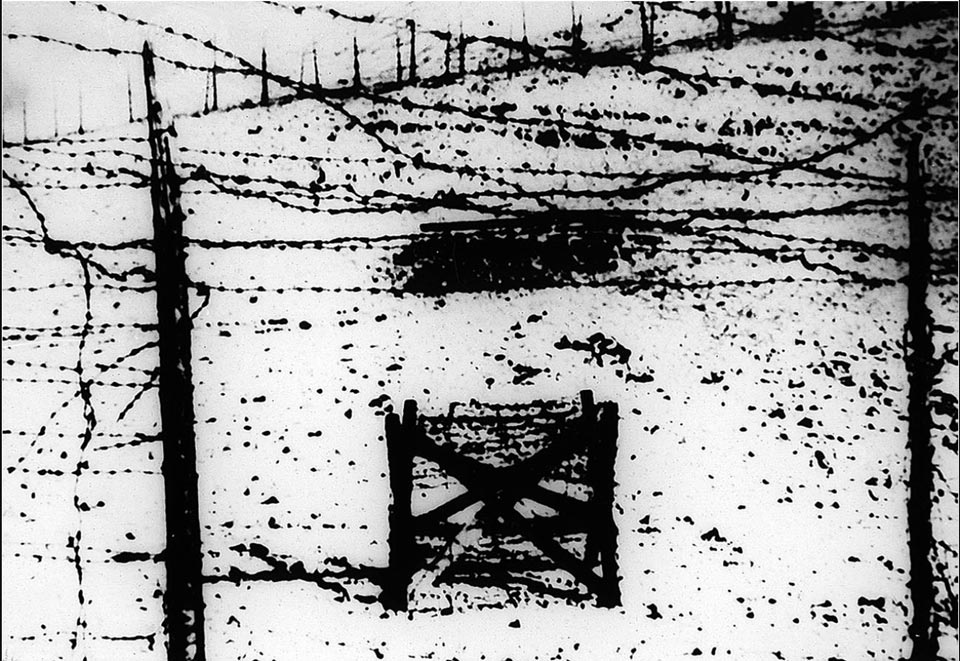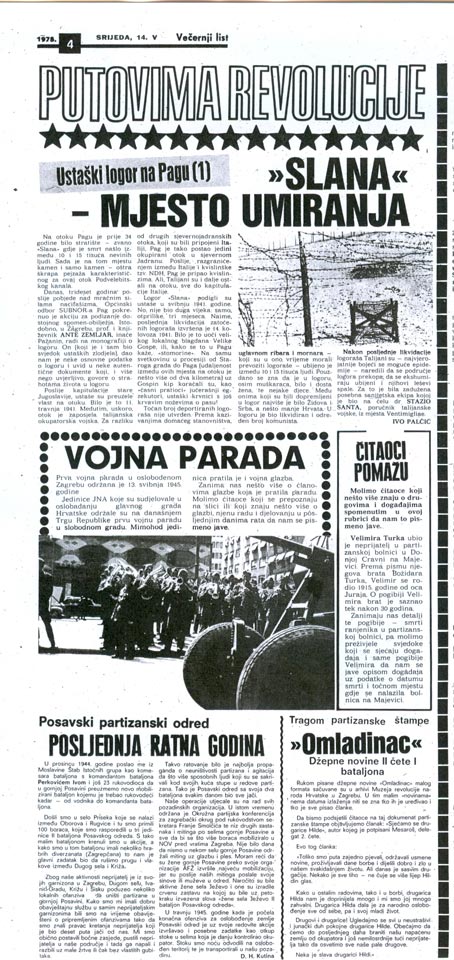
The Zagreb’s “Večernji list” (“Evening News”) published a four part serial by Ivo Palčić about camps on the Island of Pag, on Wednesdays from 14th May 1975 to 4th June 1975.
The serial was a result of talks with Ante Zemljar whose book “Charon and Destinies” contains information which helped find these serial parts. A large contribution of Zemljar’s work in finding the truth about horrible place of genocide over Serbs and Jews is revealed in the serial parts presented here.
34 years ago, on the Island of Pag there was a scaffold called “Slana” where 10,000 to 15,000 innocent people met their death. There are stones and nothing but the stones there now – a landscape of sharp furrows characteristic to this island in the Velebitski Channel.
Today, 30 years after the victory over the dark forces of Nazi-fascism, the Municipality Board of the Federation of Associations of Veterans of the National Liberation War in Pag proposed an initiative to erect a suitable monument. At the same time in Zagreb, professor and writer Ante Zemljar, who is himself from the Island of Pag, worked on a monograph about the camp. Having witnessed the Ustashi crimes himself he presented some of the basic data about the camp and an insight into some authentic documents which more than persuasively describe the horrors of living in the camp.
After the capitulation of the old Yugoslavia, the Ustashi took over the https://jadovno.com/wp-content/uploads/2010/02/13-1.jpgistration on the island. It was on 11th April 1941. However, the island was soon occupied by the Italian army. All North Adriatic islands were annexed to Italy, while Pag was the only occupied island in the North Adriatic. After demarcation between Italy and the quisling so-called ISC (the Independent State of Croatia), Pag was assigned to the quislings. However, Italians remained on the island until the Italian capitulation.
The camp “Slana” was established by the Ustashi in May 1941. But it did not last for long – only about three months. The last execution of the imprisoned detainees occurred on 14th August 1941, on the eve of the major local feast of Assumption of Mary or “stomorina”, as it is called in Pag. On the feast day itself, the previous day’s executioners with blood still dripping from the knives at their belts walked with the statue of Our Lady as the “guard of honour” in the procession from the Old Town to Pag (the distance between these two towns on the island is slightly more than two kilometres).
The exact number of deported detainees is not established. According to the testimonies of the locals, mostly fishermen and sailors – who, at the time, had to transport detainees – between 10,000 and 15,000 people were killed. It is confirmed that besides men, there was a considerable number of women and small children. Of those deported to the camp the majority were Jews and Serbs, with some Croats. A certain number of Communists were also executed at the camp.
After the last execution, the Italians, probably for fear of a possible epidemic, ordered the camp area to be excavated and the dead bodies exhumed and burned. A special sanitary crew was in charge of that, led by Dr. Stazzio Santa, lieutenant of the Italian army from Ventimiglia.
IVO PALČIĆ
Related news:
Ustaški logor na Pagu (2) IZVJEŠTAJ PORUČNIKA SANTA
Ustaški logor na Pagu (3) ŽIVI ZAKOPANI
Ustaški logor na Pagu (4): I MORE – GROBNICA
The Ustashi Camp on the Island of Pag (2) LIEUTENANT SANTA’S REPORT
The Ustashi Camp on the Island of Pag (3) BURRIED ALIVE
The Ustashi Camp on the Island of Pag (4) THE SEA WAS A GRAVE TOO

